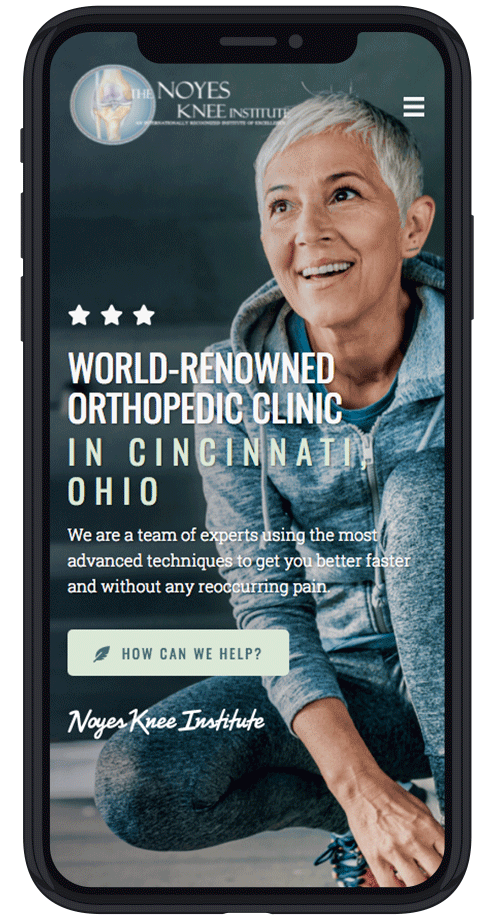Published On
Category
Female athletes often hear myths regarding their training, including in areas like conditioning, strength training, and more. At Noyes Knee Institute, we can help debunk these myths and educate our customers on knee surgery and how exercise can affect it. Here are some of the myths that might be associated with female athletics, shared by some of the best knee replacement surgeons:
Aerobic vs. Anaerobic Conditioning
Some believe aerobic exercises are the only path to a healthy cardiovascular system. A balanced combination of aerobic and anaerobic training benefits overall fitness. Aerobic exercises, such as running, swimming, or cycling, primarily target the cardiovascular system and improve endurance. Aerobic exercises typically involve activities conducted in the presence of oxygen. They mainly target type I muscle fibers, also recognized as slow-twitch fibers. During these exercises, you engage in prolonged and repetitive muscle contractions. This type of conditioning can enhance muscle endurance and cardiovascular efficiency. This form of training is generally sustainable for extended durations.
Anaerobic activities, like weightlifting or high-intensity interval training (HIIT), focus on building strength, power, and muscle mass. Anaerobic conditioning excludes the utilization of oxygen. It mainly engages type II muscle fibers, also referred to as fast-twitch fibers. This type of conditioning induces the sensation of muscle burn. Anaerobic training can enhance muscle size and strength. An anaerobic exercise regimen is not typically sustainable for extended durations. Both types of conditioning play integral roles in achieving optimal fitness.
Debunking Strength Training Myths
Some females might worry that lifting weights will lead to a masculine physique. Incorporating strength training into a fitness routine can help build lean muscle mass, boost metabolism, and enhance overall body composition.
Strength training is beneficial for maintaining joint health, especially in the context of knee replacements. Strengthening the muscles surrounding the knee can provide added support and stability. This can help reduce the risk of injury and promote longevity for the replaced joint. By understanding the misconception of bulking up, females can embrace strength training as a beneficial component of their fitness journey.
While strength training, try to do three sets of 8-10 reps and have the last set last longer. We also suggest practicing strength training two to three times a week on nonconsecutive days. Try to change exercises every two to three weeks to keep them challenging.
One strength training myth is that weights must be involved. Weights can be a way to get strength training in, but you can also use the following:
- Plyometrics: Also known as jumping exercises, they can enhance power and accelerate muscle firing rates. The additional stress from jumping contributes to the development of strong bones.
- High-Intensity Interval Training (HIIT): Involves using lower weights, higher repetitions, and minimal rest time for an effective workout.
- Resistance Bands: Provide an alternative to traditional weights, requiring minimal equipment for a challenging workout.
- Bodyweight Exercises: Planks and push-ups are equally effective for building strength by utilizing your own body weight.
Preventing Injury
Injury prevention should be understood, especially for females with a history of knee issues or replacements. Incorporating injury prevention strategies is beneficial for long-term success in your fitness goals and a healthy knee replacement.
Dynamic warm-ups, stretching, and targeted exercises can help prepare the body for physical activity and reduce the risk of injuries. Proper form and technique during strength training play a significant role in preventing strain on joints and ligaments. It is beneficial to eliminate the myth that pushing through pain is good. Instead, we suggest listening to your body and promptly addressing discomfort, which is key to avoiding potential setbacks.
Be aware of the significance of cross-training to prevent overuse injuries. Try diversifying the types of exercises and activities you do in a fitness routine. This can keep things new and also helps distribute stress across different muscle groups, reducing the risk of strain on any one area.
Incorporating Injury Prevention into Training
To effectively incorporate injury prevention into training, we suggest consulting with fitness professionals or physical therapists who can tailor a program to your specific needs. This is especially relevant for those with a history of knee replacements. We can provide specialized guidance and help to make sure you have a safe and sustainable approach to fitness.
Including balance and stability exercises in a training regimen is beneficial, as these activities can enhance perception and reduce the risk of falls or awkward movements that could lead to injuries. Strengthening the core muscles also plays a significant role in providing overall stability and support to the entire body, including the knees.
Best Knee Replacement Surgeons
At Noyes Knee Institute, we want to help our female patients maximize their performance before, during, and after knee replacement. To do so, we offer education on breaking down popular training myths regarding strength training, conditioning, and more. Contact us to learn more about how we can help maximize your athletic performance after knee surgery.

